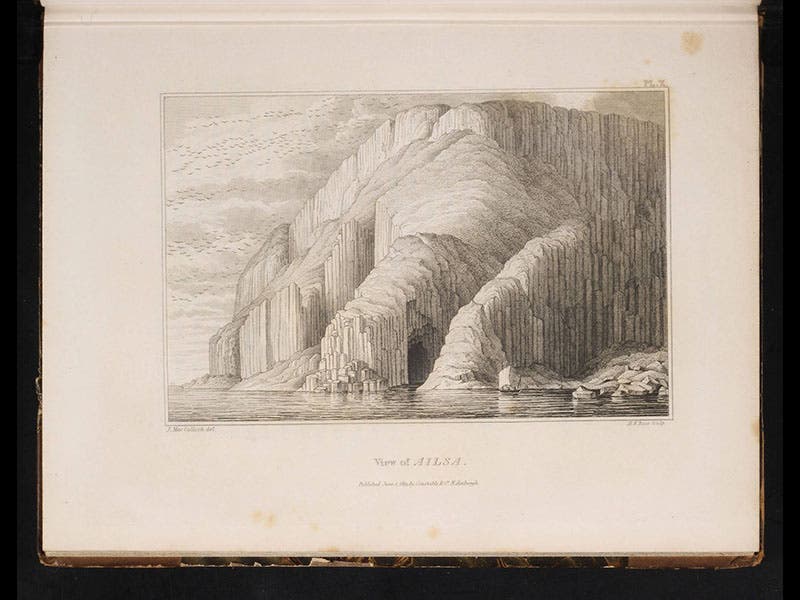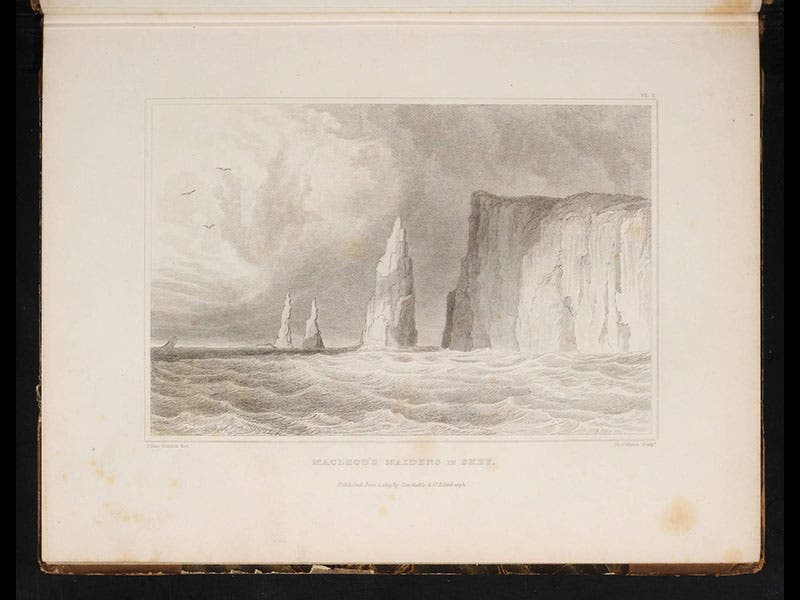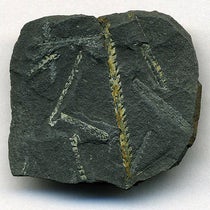Scientist of the Day - John MacCulloch
John MacCulloch, a Scottish geologist, was born Oct. 6, 1773. MacCulloch was one of the great field geologists of 19th-century Britain, surveying the nearly impassable Scottish highlands for over 20 years and preparing the first geological map of Scotland. Along the way he published A Description of the Western Islands of Scotland (1819), which has a series of plates depicting the geology of the Hebrides, including the islands of Staffa, Eigg, Skye, and Mull. MacCulloch suffered from ill health for much of his life, apparently the after-effects of a bout of malaria incurred when he served with the East India Company. He was also increasingly isolated from the geological community as he concentrated on igneous rocks, while other contemporary geologists, smitten by the new discovery that fossils are ideal geological indicators, worked on the sedimentary rocks of the Devonian, Silurian, and Cambrian system.
MacCulloch’s map of Scotland did not appear during his lifetime. He married for the first time in 1835, and while on his honeymoon in Cornwall, he was thrown from a carriage, fracturing his leg in multiple places. It was necessary to amputate, and he did not survive the operation. But his map of Scotland appeared the very next year, and it is one of the classic geological maps, along with William Smith’s map of England (1815). We have Smith’s map in the Library, but not MacCulloch’s, which is quite scarce.
The images above, all taken from A Description of the Western Islands, show, in order: the isle of Staffa; Fingal’s Cave on Staffa; a formation known as The Storr on the isle of Skye; the isle of Ailsa (where curling stones come from), and another formation known as Macleod’s Maidens, also on Skye. In addition, we displayed MacCulloch’s engraving of the towering Scuir of Eigg in our 2004 exhibition, Vulcan’s Force and Fingal’s Cave.
Dr. William B. Ashworth, Jr., Consultant for the History of Science, Linda Hall Library and Associate Professor, Department of History, University of Missouri-Kansas City. Comments or corrections are welcome; please direct to ashworthw@umkc.edu.











